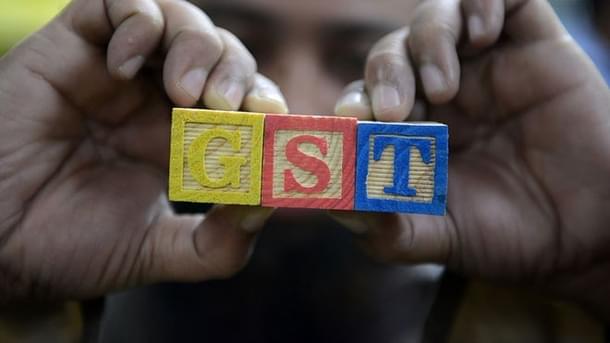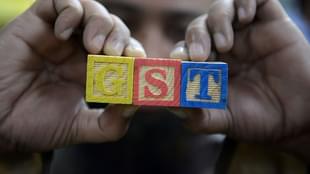Economy
GST Is Modi’s Baby: It Couldn’t Have Happened Without Him; Both Credit And Blame Will Go To Him
R Jagannathan
Jun 26, 2017, 11:47 AM | Updated 11:47 AM IST
Save & read from anywhere!
Bookmark stories for easy access on any device or the Swarajya app.


With each passing day, we find new uncertainties about the goods and services tax (GST) being exposed by the media. In newspapers today (26 June), we learn that car leasing will become costlier after the 1 July, that retailers are refusing to buy new stock if companies refuse to protect their margins post-GST, and that new mutual fund schemes are being launched to bet on the shares of those companies that will gain from the new unified tax.
There is little doubt that the government will have to come out with new clarifications almost every day in the first three months after GST is launched from the midnight of 30 June -1 July. We are going to see confusion, and feverish attempts to paper over that confusion too.
The government will surely draw flak from the political spectrum and businesses for refusing to shift the GST launch date. However, if there is one thing history has taught us, it is that postponement only shifts the day of reckoning. People will relax till the deadline approaches once more, and then demand more time. It is to the Modi government’s credit that it has stood firm on the launch date.
Warts and all, GST is the one transformative change from which no one can deny Narendra Modi credit. Demonetisation may yield uncertain benefits, the fight against black money is far from won, subsidy reforms are far from done – and so on – but GST is right there, emblazoned across the heart of India. You cannot miss GST advertisements anywhere in the media.
It is Modi’s single-minded pursuit of GST that has ensured that we are less than a week away from its launch. For better or worse, no one can turn the clock back on GST anymore.
GST is a big deal not just because it attempts to integrate India into a single composite tax for indirect taxes on goods and services, but because both politically and economically it is a watershed. It is as big a change as the euro, the European Union’s common currency that was adopted on 1 January 1999. Despite recent bouts of crises involving Greece, Spain, Portugal, Ireland, and Italy), the euro is still the world’s No 2 currency.
The political decision on the euro forced all of Europe’s individual countries to dilute some of the currency-creating functions of their national governments and central banks, thus creating a new federation of shared powers.
The GST will do the same in India. From a situation of separate sovereignties in taxation – where centre and states had separate and full rights to tax products and services – GST will aggregate both central and state powers in a GST Council. This is one of the biggest surrenders of fiscal sovereignties by 30 governments – one Centre and 29 states, not to speak of Union Territories – ever attempted in the history of man.
The very fact that GST took more than 15 years from conception during NDA-1 to finalisation in NDA-2 shows how tortuous the negotiations to surrender sovereignty have been.
In fact, it would be fair to say that but for the rise of the BJP in many states and Modi at the centre, GST may have never taken off. Reason: it was the big producing states, Gujarat, Maharashtra and Tamil Nadu, that were opposed to GST, since the tax is a destination-based one, and mildly favours consuming states over producing states.
Modi’s rise muted the opposition from the producing states, including Gujarat and Maharashtra, leaving only one holdout - Tamil Nadu. It was ultimately forced to join in for fear of being left out in the cold. As on date, only Jammu and Kashmir (J&K) remains without a state GST law, with Kerala and West Bengal issuing ordinances to impose state GST. J&K, due to the unique nature of its constitution, needs to ratify the GST in its assembly. The J&K legislation has been stuck in the usual political tussle between two Kashmir Valley-based parties, the ruling Peoples Democratic Party (PDP) and the National Conference.
The shared sovereignty of GST between Centre and states means that any new rate or rule has to evolve largely by consensus. Even though the GST Council can take decisions based on a weighted majority of three-quarters of the votes, in a federal polity like India if even one or two states are aggrieved, and decide to make political capital out of it, there could be a major constitutional ruckus, with the courts being called in to adjudicate. In other words, the GST Council is unlikely to decide things by voting on most sensitive issues.
This implies that changes will be slow, and well advertised in advance – with important gains for transparency. Taxes cannot be imposed or withdrawn at the whim of a finance minister. (Except in the case of petroleum products, which remain in the domain of Centre and states separately.)
While the GST rate structure as it stands now is far from ideal – there are five rates of 3 per cent (for gold), 5 per cent, 12 per cent, 18 per cent, and 28 per cent, and a super-luxury segment above that – it is the first step towards integrating India economically. And this means the politics of GST is as important as the economics.
It is a high-risk, high-reward initiative. Only time will tell if the decision was foolhardy or visionary.
The miracle is that it is happening just at a time when Opposition-mistrust of the Centre is maximum.
(A part of this article was first published in DB Post)
Jagannathan is former Editorial Director, Swarajya. He tweets at @TheJaggi.





